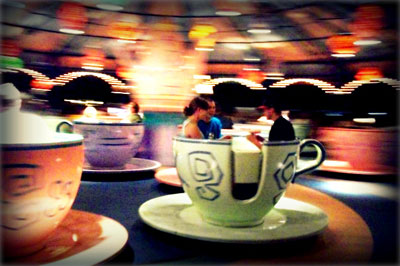All Nonfiction
- Bullying
- Books
- Academic
- Author Interviews
- Celebrity interviews
- College Articles
- College Essays
- Educator of the Year
- Heroes
- Interviews
- Memoir
- Personal Experience
- Sports
- Travel & Culture
All Opinions
- Bullying
- Current Events / Politics
- Discrimination
- Drugs / Alcohol / Smoking
- Entertainment / Celebrities
- Environment
- Love / Relationships
- Movies / Music / TV
- Pop Culture / Trends
- School / College
- Social Issues / Civics
- Spirituality / Religion
- Sports / Hobbies
All Hot Topics
- Bullying
- Community Service
- Environment
- Health
- Letters to the Editor
- Pride & Prejudice
- What Matters
- Back
Summer Guide
- Program Links
- Program Reviews
- Back
College Guide
- College Links
- College Reviews
- College Essays
- College Articles
- Back
History in a Cup
It’s 5 am.
The harmonious rhythm of the alarm clock weaves itself into my REM sleep; my eyelids burst open. As I get up from the right side of the bed, my early riser persona is on its way to perform its morning ritual. I slither into the kitchen, stealthily making my presence unheard, and open the sacred drawer.
Taking out the vital materials and blending them with boiled water, I, the artist in my own right, create a unique concoction out of black tea leaves, milk, a generous teaspoon of honey, and drops of lemon. An ornate Chinese cup comes off the shelf and gets filled with my creation.
It is still apocalyptically empty on the outside; the rest of the world is dormant, in contrast with my thoughts. I sit outside on the patio, scanning a panorama sporadically cluttered with urban stars. Welcoming a meditative state, I fix my gaze on the steam diffusing off the surface of my tea and let my crisp thoughts wander.
I notice the cup in my hand is from the same set my family uses in presence of guests. Good company is the foundation of quality tea ceremony to Russians. Even in America, my father would bring out the “samovar,” a traditional metal urn, to heat up water and ceremoniously serve his guests. For my people, tea is a social adhesive, bringing family, neighbors, and friends into an intimate social circle. To get my tea, I go to the local supermarket on a regular basis and choose a collection of preferred leaves-from green to red to black. However, its present day accessibility greatly undermines its journey from genesis to household and its saturated history.
It is a mystery what journey the tea in my drawer undertook to reach my whereabouts. It might have come from a small afternoon tea parlor in England, an expansive plantation in China, or an annual harvest in India. Transcending back generations, tea was a sign of nobility, power, and influence. In China, only the wealthiest could enjoy a cup of Thai tea and trade networks of the desires staple paved road for immense affluence, ultimately building empires. Somehow, this product of universal effort is now in my hand’s possession-five dollars for four ounces.
The cup is now half full; aromatic bitter sweetness is mysterious yet harmonious, material as well as spiritual, and invigorating as well as soothing. I look toward the horizon where darkness juxtaposes the penetrating hue of a new day. I indulge in the sunrise, the same feat a person in Russia observed 8 hours ago or an observer in China will in 12 hours. As I sip the last of what is left, I conclude that it all boils down to this: despite the geographic, cultural, or traditional isolation, there will always exist a point of unity in this world-we all revolve around sun, live under the same sky, and hold a cup of freshly brewed tea at one point in our life. Ultimately, millions are united, generations of the past and future, by something so simple yet so vast: the product of my morning ritual.

Similar Articles
JOIN THE DISCUSSION
This article has 0 comments.
